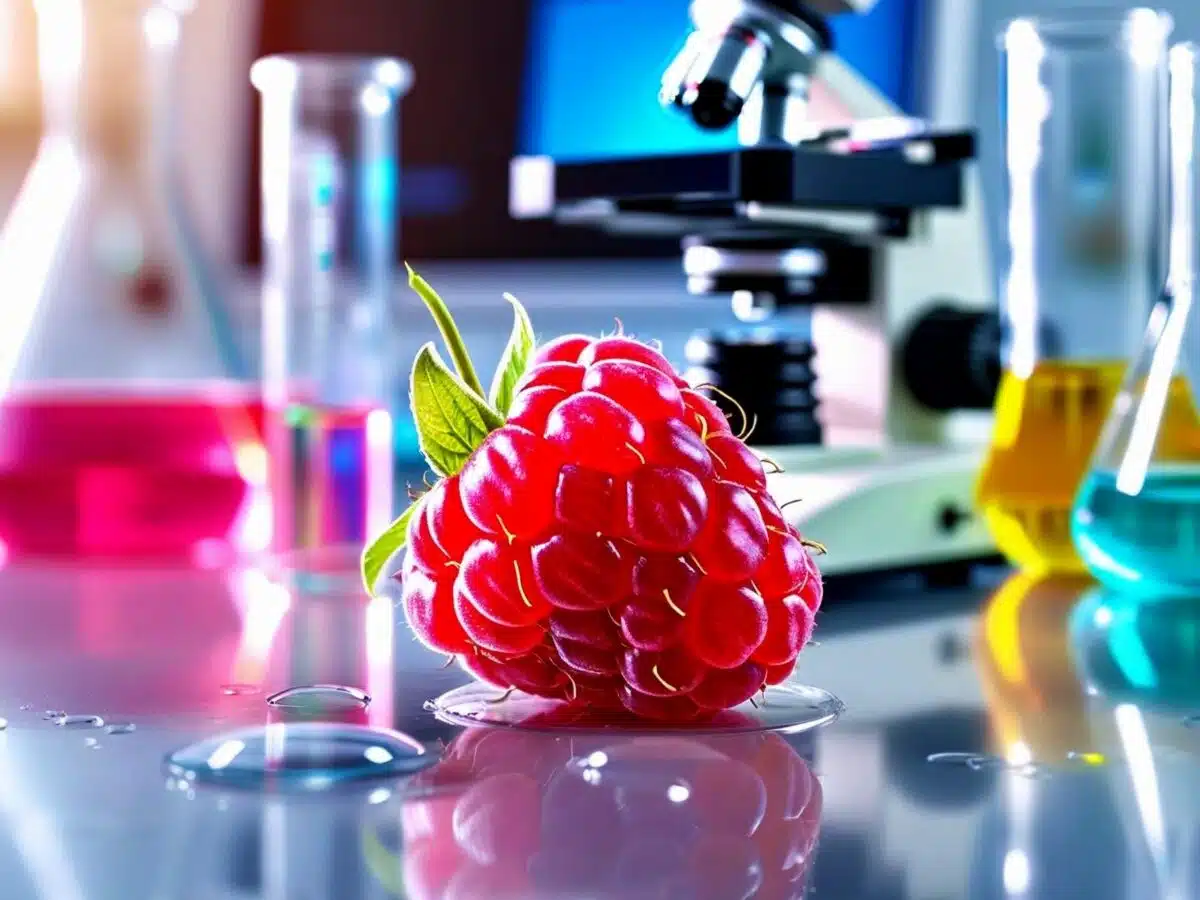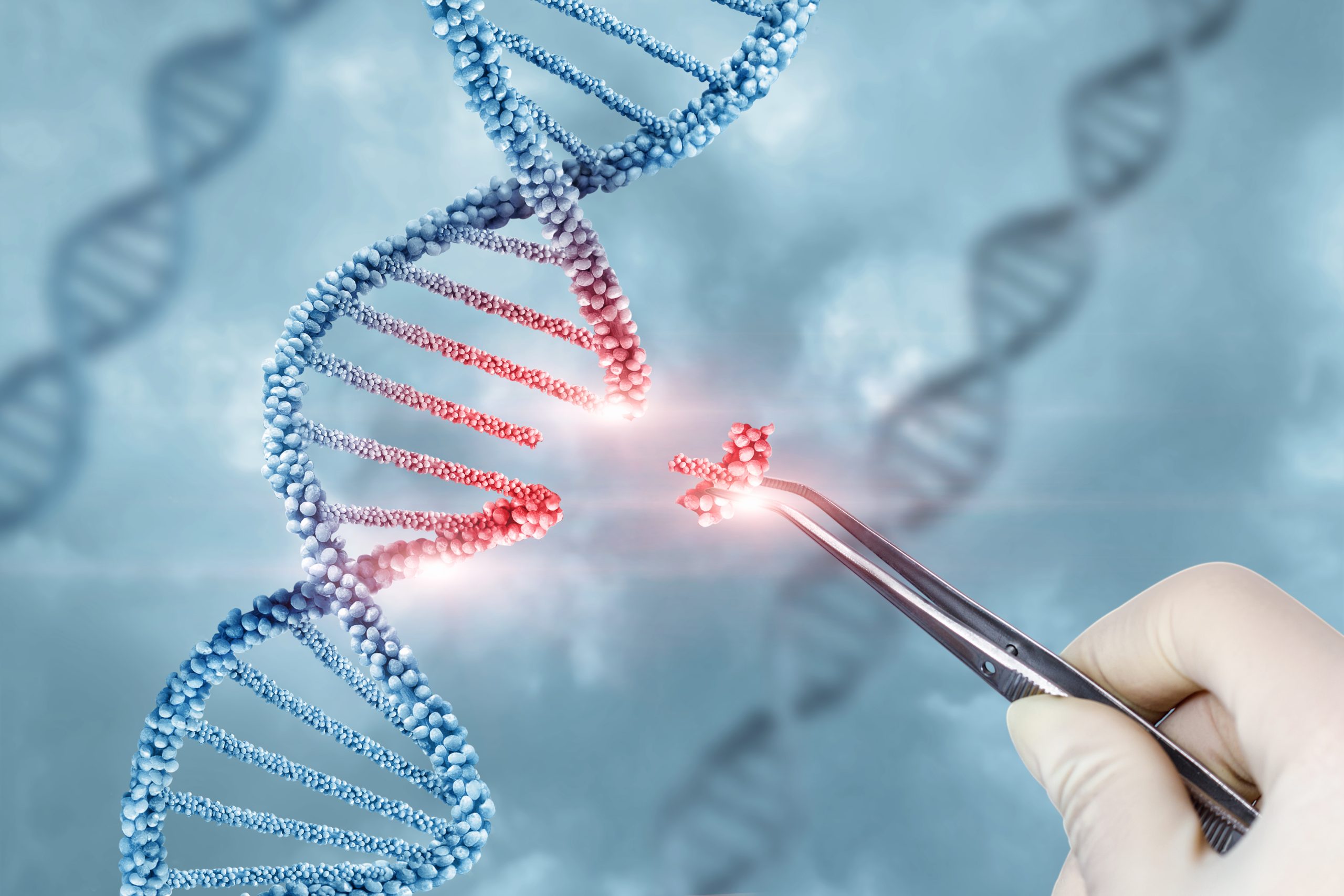What if the future of agriculture isn’t about genetic modification as we know it, but about rewriting nature with surgical precision—without leaving any foreign DNA behind? That’s the promise emerging from Cranfield University in England, where researchers have just achieved the world’s first DNA-free gene edits in raspberry plants using CRISPR technology. This breakthrough could mark the beginning of a new agricultural era where crops are enhanced for taste, shelf life, and resilience, all while sidestepping the heavy regulatory baggage that has slowed the acceptance of genetically modified organisms.
Continue reading… “Rethinking the Raspberry: DNA-Free Gene Editing Opens a New Chapter in Precision Agriculture”DNA-Wrapped Nanoparticles Triple CRISPR’s Power—and Open the Door to a New Era of Genetic Medicine
CRISPR has been hailed as the most revolutionary tool in modern medicine—a molecular scalpel capable of rewriting the code of life itself. But despite its breathtaking promise, the technology has been hobbled by one stubborn obstacle: delivery. Getting CRISPR machinery into the right cells, in the right tissues, at the right time has often been more of an art than a science, with inefficiencies and risks that have slowed its path from the lab to the clinic.
Now researchers at Northwestern University have unveiled a breakthrough that could tip the balance. By wrapping CRISPR inside spherical nucleic acids (SNAs) built from strands of DNA, the team has created a delivery vehicle that triples efficiency, dramatically reduces toxicity, and expands the range of cells that can be edited. These tiny, DNA-coated nanoparticles—known as LNP-SNAs—are rewriting the rules of genetic medicine.
Continue reading… “DNA-Wrapped Nanoparticles Triple CRISPR’s Power—and Open the Door to a New Era of Genetic Medicine”The Beginning of the End for Type 1 Diabetes? Gene-Edited Cells Outsmart the Immune System
For more than a century, type 1 diabetes has been managed, not cured. Patients inject insulin, monitor blood sugar obsessively, and live with the constant shadow of long-term complications. But now, for the first time in history, scientists may have found a way to outsmart the immune system itself—replacing what’s broken with engineered cells that refuse to be rejected. This isn’t just medicine; it’s a glimpse into the future of cellular engineering as a tool to rewrite the rules of human health.
Continue reading… “The Beginning of the End for Type 1 Diabetes? Gene-Edited Cells Outsmart the Immune System”The Genetic “Swiss Army Knife” That Could Rewrite Medicine Without Leaving Scars
Gene therapy has always carried a built-in paradox: the very act of “fixing” DNA risks creating permanent scars that could linger for generations. Now Yale researchers say they’ve cracked a safer way forward—genetic surgery without the scars.
Instead of hacking DNA, which is permanent and fraught with risk, they’ve turned their attention to RNA—the fragile middleman between DNA and proteins. RNA doesn’t last, and mistakes here don’t echo through generations. That makes it the perfect target for rewriting genetic messages without reshaping the human blueprint.
Continue reading… “The Genetic “Swiss Army Knife” That Could Rewrite Medicine Without Leaving Scars”Weaponizing Mosquitoes: The Genetic Hack That Could End Malaria Without Killing a Single Bug
The deadliest animal on Earth isn’t a lion or a shark. It’s the mosquito.
These tiny, winged parasites are responsible for more deaths throughout human history than all wars combined. Every year, malaria alone kills over half a million people—most of them children. But now, scientists have unveiled a radical twist in the fight against these flying disease factories: don’t kill the mosquitoes. Reprogram them.
In a breakthrough that could change global health forever, researchers have genetically engineered mosquitoes to become immune to malaria—and then passed that immunity down through generations using a gene drive that rewrites the rules of evolution itself.
Welcome to the age of biological counterinsurgency.
Continue reading… “Weaponizing Mosquitoes: The Genetic Hack That Could End Malaria Without Killing a Single Bug”Google’s AI Is Decoding the Genetic “Dark Matter” That Controls Us All
For years, scientists stared at the human genome and shrugged. We mapped it, sequenced it, even gave it a name—the Human Genome Project. But when it came to understanding what most of that DNA actually does, we were flying blind. Only about 2% of our genetic code directly tells cells which proteins to build. The rest—an eerie 98%—was long dismissed as “junk.”
Not anymore.
Google DeepMind just dropped a molecular bombshell: AlphaGenome, an AI that doesn’t just read your DNA—it predicts how the darkest corners of it control your body’s machinery. It’s not just looking at genes. It’s reading the switches, regulators, silencers, enhancers, and hidden messages that tell those genes when, where, and how to act.
Continue reading… “Google’s AI Is Decoding the Genetic “Dark Matter” That Controls Us All”The DNA Shield You Didn’t Know You Needed: How Scientists Are Now Fortifying Life’s Fragile Code
Tucked deep inside every cell is a time bomb we rarely talk about—mitochondrial DNA. Unlike its nuclear cousin, this tiny genetic engine doesn’t have much of a repair crew. When it breaks, it breaks hard. And that microscopic failure can cascade into inflammation, tissue damage, and a long list of chronic diseases.
But now, a team of researchers at UC Riverside has built something straight out of a cellular science thriller: a chemical shield that locks onto mitochondrial DNA before it unravels. It doesn’t just repair damage—it prevents the loss entirely.
Meet mTAP, a mitochondria-targeting molecular sentinel that doesn’t just react to cellular stress. It outsmarts it.
Continue reading… “The DNA Shield You Didn’t Know You Needed: How Scientists Are Now Fortifying Life’s Fragile Code”Reprogramming Nature: How Gene Editing Could Rescue the Species We’ve Already Failed
For decades, conservation has been about slowing the bleeding—captive breeding, protected habitats, desperate triage for species spiraling toward extinction. But what if we stopped trying to preserve nature like a museum exhibit and started engineering its comeback?
A new wave of scientists thinks we can. And they’re not talking about protecting animals—they’re talking about reprogramming them.
In a landmark paper published in Nature Reviews Biodiversity, an international team of researchers argues that gene editing—yes, the same tech used to make drought-resistant corn and revive mammoths—can now be applied to rescue endangered species. Not metaphorically. Literally.
This isn’t about keeping a few more pandas alive. This is about restoring lost genetic diversity, reversing evolutionary collapse, and using 21st-century tools to solve problems we created in the 20th.
Let that sink in: We may soon edit animals back to health.
Continue reading… “Reprogramming Nature: How Gene Editing Could Rescue the Species We’ve Already Failed”Decoding Aging: Unraveling the Role of Gene Length
Scientists at Northwestern Medicine have made a groundbreaking discovery shedding light on the fundamental mechanisms underlying aging. Their research, published in Trends in Genetics, identifies gene length as a pivotal factor in the aging process, linking longer genes to life-shortening neurodegenerative diseases like Alzheimer’s.
Continue reading… “Decoding Aging: Unraveling the Role of Gene Length”Using gene editing to fight deadly genetic diseases
Experts share the latest advances at annual PQG conference
By – Karen Feldscher
November 30, 2022 – Cutting-edge gene editing techniques hold enormous promise for tackling devastating diseases such as sickle cell disease, Huntington’s disease, and heart disease, according to experts.
At the 16th annual Program in Quantitative Genomics (PQG) conference, a two-day event held in early November and hosted by Harvard T.H. Chan School of Public Health, a dozen speakers spoke about recent and upcoming research on therapeutics and technologies targeting specific genetic mutations that cause disease. About 180 participants from around the world attended the virtual conference.
Continue reading… “Using gene editing to fight deadly genetic diseases”Gene-edited super tomato may provide the vitamin punch to fight Alzheimer’s, Parkinson’s, and cancer
NORWICH, United Kingdom — A genetically engineered “super” tomato that may have the power to fight Alzheimer’s, Parkinson’s, and cancer has been created by British scientists. The modified fruit is packed with vitamin D — which also boosts bones, teeth, and muscles.
Estimates show more than four in 10 Americans may have a vitamin D deficiency, which can increase their risk of developing a host of illnesses. Now, a team at the John Innes Centre in Norwich has engineered a variety of tomato that produces more.
They used a gene editing technique known as CRISPR, enabling them to make precise changes in DNA at specific locations. The procedure blocked the action of an enzyme that normally converts the vitamin to cholesterol.
“We’ve shown that you can biofortify tomatoes with provitamin D3 using gene editing, which means tomatoes could be developed as a plant-based, sustainable source of vitamin D3,” says corresponding author Professor Cathie Martin in a media release.
“Forty percent of Europeans have vitamin D insufficiency and so do one billion people world-wide. We are not only addressing a huge health problem, but are helping producers, because tomato leaves which currently go to waste, could be used to make supplements from the gene-edited lines.”
Continue reading… “Gene-edited super tomato may provide the vitamin punch to fight Alzheimer’s, Parkinson’s, and cancer”How CRISPR is tackling the troubling immune response that’s plagued gene therapy until now
One of the major challenges facing gene therapy — a way to treat disease by replacing a patient’s defective genes with healthy ones — is that it is difficult to safely deliver therapeutic genes to patients without the immune system destroying the gene, and the vehicle carrying it, which can trigger life-threatening widespread inflammation.
Three decades ago researchers thought that gene therapy would be the ultimate treatment for genetically inherited diseases like hemophilia, sickle cell anemia, and genetic diseases of metabolism. But the technology couldn’t dodge the immune response.
Since then, researchers have been looking for ways to perfect the technology and control immune responses to the gene or the vehicle. However, many of the strategies tested so far have not been completely successful in overcoming this hurdle.













